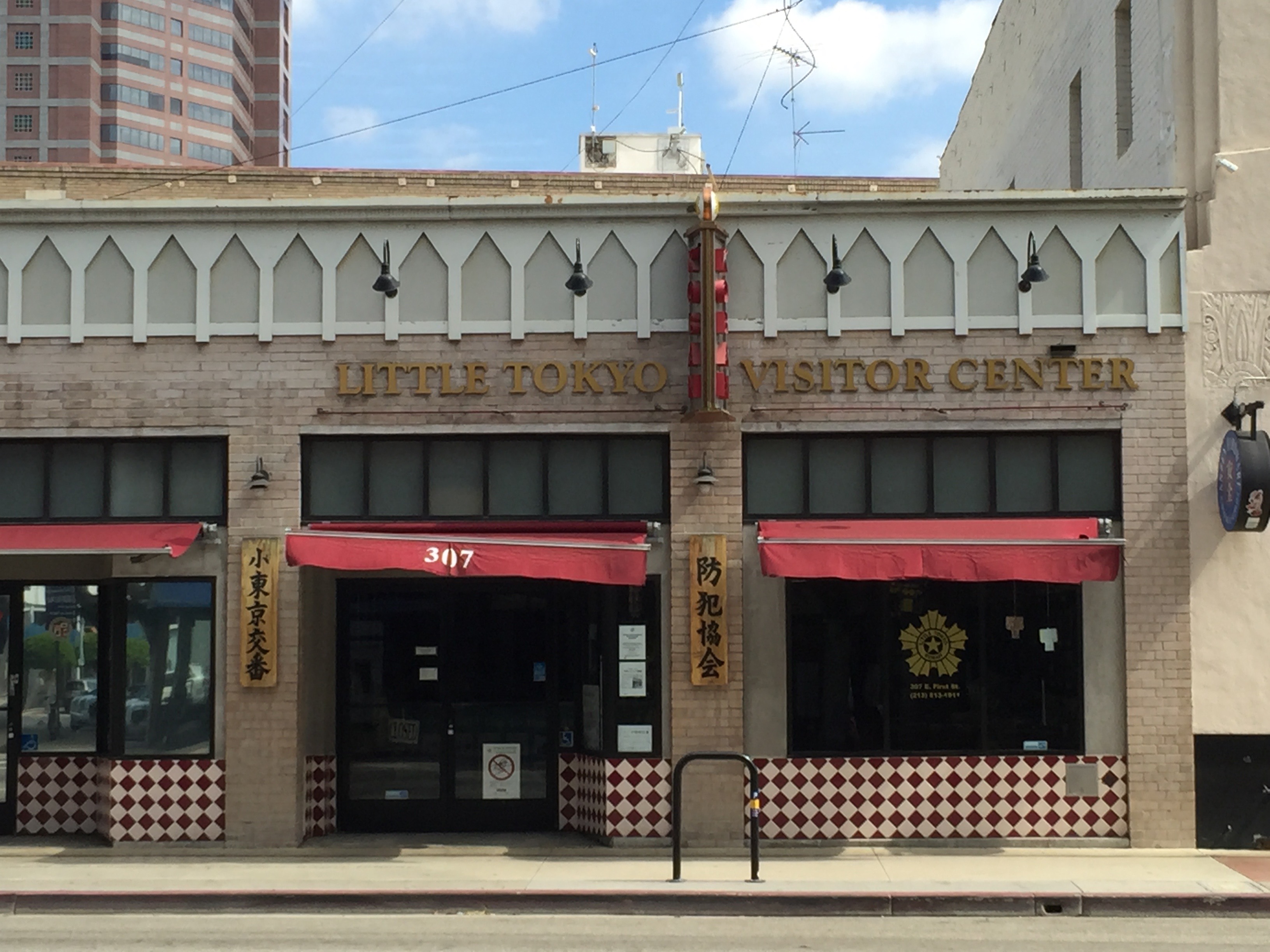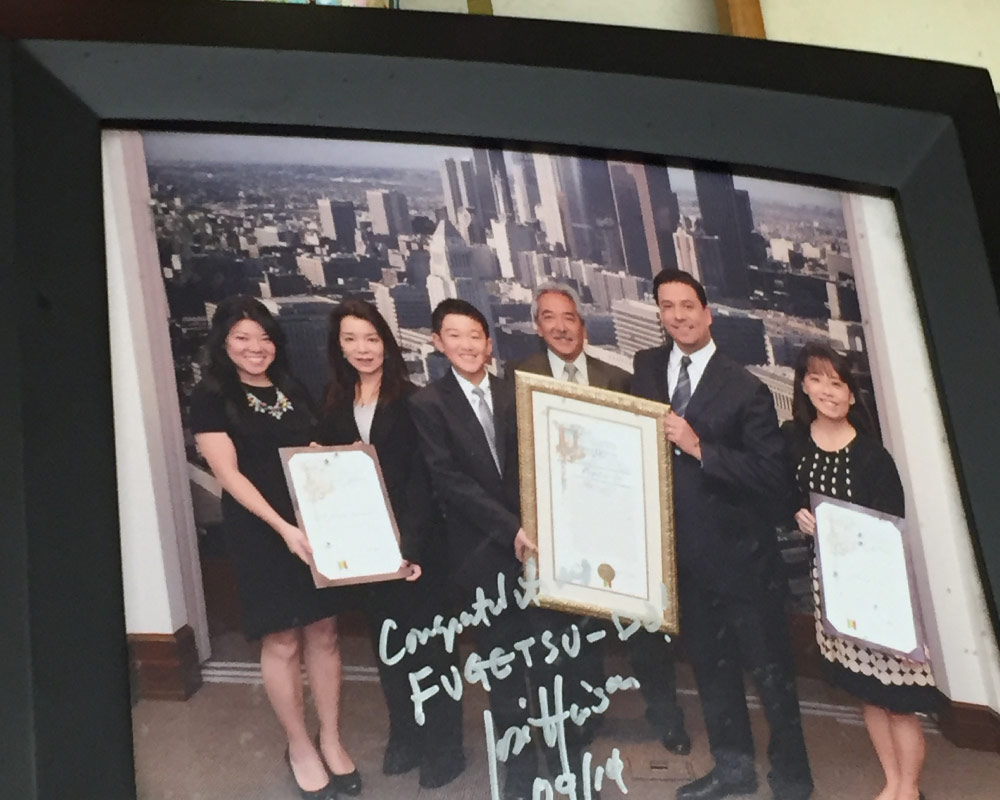Little Tokyo Visitor Center



He sits behind a desk daily, thinning white hair atop his head, rugged wrinkles filling his face and a sheepish smile that appears here and there. This is Brian Kito, a man whose own name presents a rare misnomer. Kito’s identity is not the name plastered across his ID; his identity is the title that precedes it: Community Leader.
In Little Tokyo, a leader signifies trust. Trust that the community’s needs will be taken into account when decisions have to be made. Trust that their voices be heard, their preferences be remembered, their culture be cherished.
On a given day, Kito steps out from his desk and goes outside the Visitor’s Center where he works out of. His biggest conundrum at the time may be what he will have for lunch that day.
That sushi restaurant in the corner of San Pedro Street and 1st? The famous ramen spot in Weller’s Court? Or maybe it’s the upscale bar a mere block from the visitor center, infusing Japanese food with an American twist.
The plethora of food options at his disposal are truly emblematic of the culture that seeps from Little Tokyo. And yes, the fact that the area is so “little” naturally heightens the feeling of pervading cultural density at every turn
Maybe Kito is craving a cup of coffee instead? Cafe Dulce inside the plaza is ready to serve. Dessert, perhaps? Well, let’s just say Kito won’t have to worry about that. A mere step away from his office inside the visitor center lies a shop that bears his heritage. Fugetsu-Do Confectionery. One of the oldest shops in Little Tokyo has been present on 1st Street since 1903; the mochi specialty shop is both a staple and a beacon of Japanese culture inside the community.
Kito inherited the shop from his father Roy, who inherited the shop from his father Seiichi. That’s three generations of businessmen, and with Kito having a son of his own, the lineage looks to continue.

It’s hard to argue that there is a food more representative of Japanese culture than mochi. When a child turns one year old, there is a special mochi for him or her. When New Year’s arrives, a unique mochi is the one that most Japanese people consume. Even in funerals, there is specific type of mochi used for the somber event. In short, mochi is not merely something to be eaten, but something that symbolizes the musings of Japanese culture. That, Kito has said, is why the store has endured as a staple of the community.
Likewise, it’s hard to argue there’s any one more embedded in the history and culture of Little Tokyo than Kito. His wife Tokoto now runs the shop from day-to-day, while Kito finds himself working more often from the visitor center—or “Koban” as it is known—dealing with the problems of the community as the President of its Public Safety Association.
“He spends every day here,” says his wife Kimoto. “If he’s not working at the shop, he’s at the Koban dealing with community problems.”
In August, the Little Tokyo community held its 75th Annual Nisei Week Japanese Festival. A weekend of dance, food, sports, exhibitions and many other events that are the pinnacle and shining example of the successful breeding of culture that moves from one generation to the next. The Visitor Center, and Kito by both default and desire, played a part in hosting the festival.
Step inside that very same visitor center today and you’ll not only find Kito himself, but a group of community volunteers and workers, talking to incoming visitors, pointing people certain ways and telling them the ins and outs of Little Tokyo.
Is it music you are looking for? That would be the Karaoke in the middle of the plaza that is calling your name on Friday nights. Be sure to have a song in mind and confidence under your belt. Maybe it’s another form of entertainment that fits your weekend-thirsty palate? Get to San Pedro Street earlier and you can catch the latest exhibit inside the Japanese American Museum.
Kito and company know all the amenities above and more like the back of their hand, multiple maps of the neighborhood flood the visitor center alongside flyers for events and postings for lessons. It’s never a dull moment in Little Tokyo and Kito is enjoying being right on 1st Street, at the center of where it all began and now continues. His passion and interest of what goes on in Little Tokyo clearly exhibits the fact that there is something else lying beneath that interest. A nostalgic remembrance for the culture of the past that breeds a desire to preserve the roots of that culture in the present.